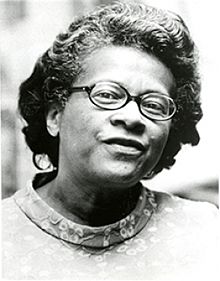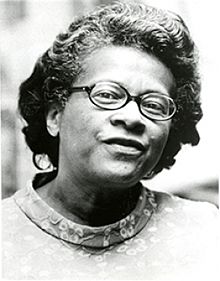

Letitia Woods Brown (1915-1976) was born in Tuskegee, Alabama. The Woods family had a long history in education. Her maternal great grandfather Lewis Adams was one of conceivers and founders of Tuskegee Institute. Her parents were both instructors at Tuskegee and her early life revolved around the intellectual pursuits of student life at Tuskegee.
Letitia matriculated to Ohio State University in the mid-1930s to pursue a Master’s of Arts in history. During the course of her program, her academic advisor openly questioned why an African American woman would be interested in obtaining a graduate degree “since everyone knew that Negroes didn’t have the intellectual ability for academic pursuits.” This stereotype suffered a bruised ego when in 1937 Letitia graduated with her MA in history.
In 1945, Dr. Brown enrolled at Harvard University where she sought a Ph.D. in History. While completing the research for her dissertation, Letitia became enthralled with the role of free and enslaved Black people in the nation’s capital; their social, cultural, academic and private lives intrigued her. During the school year, in addition to raising a family, she taught at Howard and George Washington and was active in numerous professional organizations.
In 1966, Letitia became the first black woman to earn a Ph.D. in History from Harvard. She entered Harvard a single woman of age 30 and graduated as a grandmother of age 51.
While professor of history and American civilization at George Washington University in Washington, D.C., Dr. Brown helped preserve historical sites of the black community as a member of the Committee on Landmarks of the National Capital.
She also wrote several books on the capital. In 1971 she wrote Washington from Banneker to Douglass, 1791–1870 with Elsie M. Lewis. The next year she wrote Washington in the New Era, 1870–1970 , also with Lewis, and Free Negroes in the District of Columbia, 1790–1846 , with Richard Wade.
